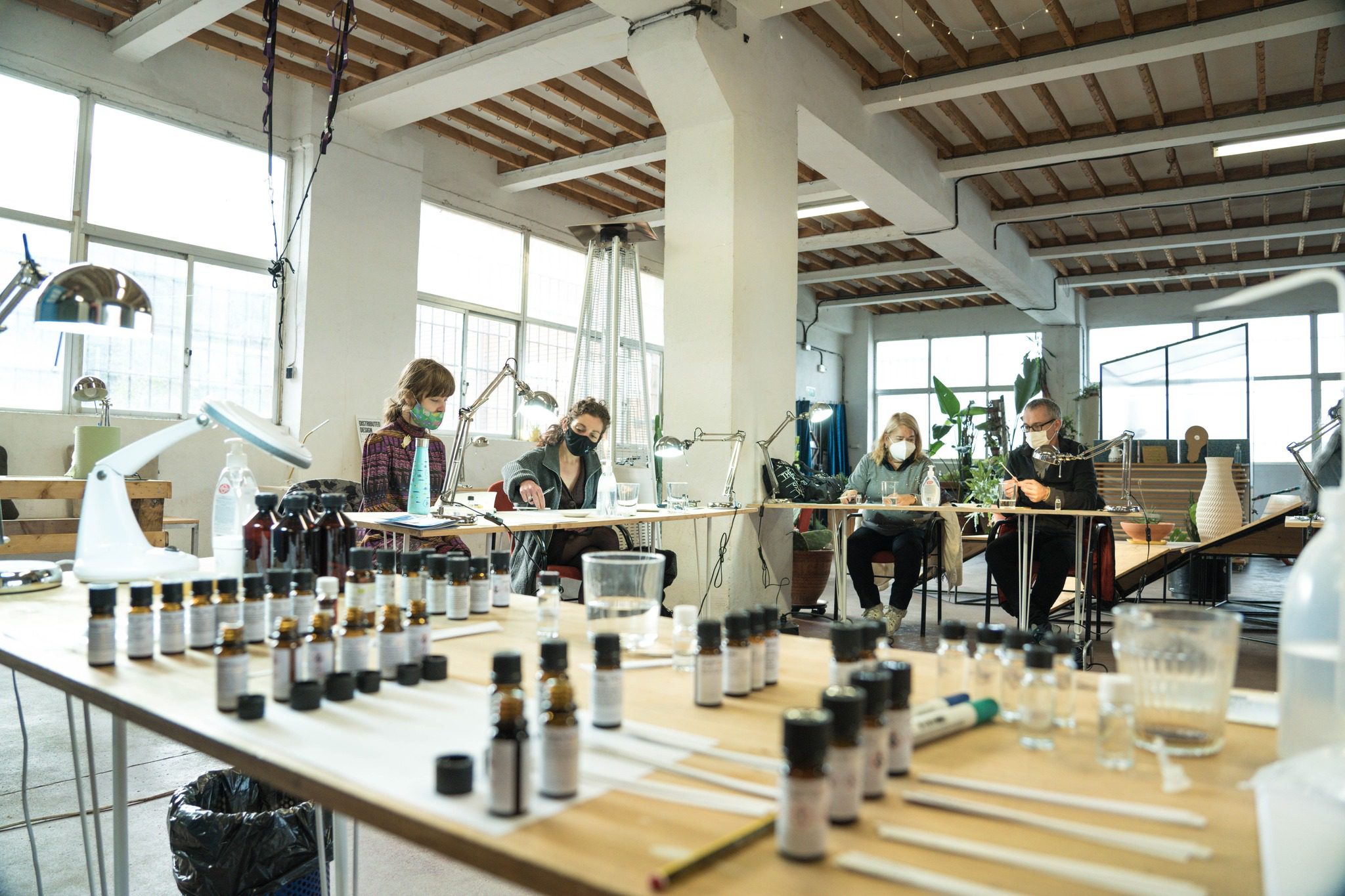It is hard to not become polarised or get lost in the hyperbolic narrative around blockchain and some of its most notorious practical applications, cryptocurrencies and non-fungible tokens. Since the beginning its use to finance creative, social and artistic projects has been on the table, but the excessive use of energy and the hiperspeculative environment that surrounds these technologies pushed away a whole generation of creative technologists.
In particular, the open source hardware movement, fab labs and maker culture have kept in general a “no thanks” opinion about blockchain use in hardware-based physical projects that has left unexplored many lines of work that could pave the way to new ways of financing open source communities that democratise access to advanced technologies.
Can blockchain technologies such as non-fungible tokens be applied, with ethical and environmental perspective to physical objects to finance distributed design projects? In this new edition of Distributed Design we will try to answer this question helping six emerging creatives to learn to use non-specialist tools to digitalise their value proposals with Web3 tools.
In its first year of the 2022-2025 Cycle of Distributed Design, co-financed by the Creative Europe programme, Espacio Open wishes to accelerate the adoption with critical perspective of emerging technologies that could offer new solutions to the unsolved challenge of the main question that worries many emerging creatives who are discovering the complexity of finding ways to turn their passion and visions into viable projects.
A total of six selected emerging creatives received in Bilbao hands-on training with an interdisciplinary team to incorporate blockchain technologies with a critical approach, with special attention to its environmental and ethical implications.

CONTEXT
The main source of critical perspective towards the excessive energy consumption around minting NFTs came from the new media art scene. In February 2021, artist Joanie Lemercier opened the debate by cancelling a cryptoart release due to the “insane and unnecessary waste of electricity involved”.
Since then, there’s been growth in ecosystems that allow artists to find new income sources in the crypto scene while keeping their carbon footprint in ethical standards. These tools are also taking the specific features of blockchain projects to fund pioneer open source projects with smart contracts that allow for money to act as software, automatically redistributing a percentage of each sale to the community behind the tool that made the artwork possible.
The Processing Foundation, for example, has received 10 million euros, mostly from cryptocurrency donations by artists using the creative software Processing. The foundation has achieved a financial stability without precedents in its two decade history.
The many possible futures of open source projects seems to have several overlaps with blockchain technologies. Our two day bootcamp aimed to provide participants all necessary intellectual and technical tools to navigate this environment and the last frontier of technologies changing societies.
The course included hands-on training that will allow the participants to learn how to create their own NFTs in the blockchain Tezos, as well as the state of the art of programmable value redistribution tools and communities.
PROMOTION OF THE PROJECTS
The Bootcamp took place during Maker Faire Bilbao 2022, celebrated in the Bilbao Old Cookie Factory in Zorrotzaurre, Bilbao.
ESPACIO OPEN + VARVARA & MAR
The bootcamp was led by Espacio Open and artistic duo Varvara & Mar, who have been among the new media art generation that pioneered the use of many technologies, from AI to digital fabrication to blockchain technologies, as tools for creative expression with a knowledge sharing ethos.
Story by Espacio Open
